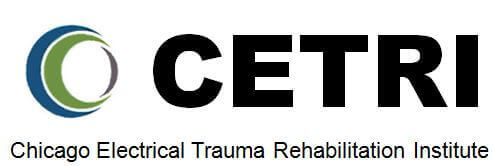
Striking Comparisons: Your Odds of Being Struck by Lightning Versus Other Common Injuries
When we think about being struck by lightning, images of ominous storm clouds and the raw power of nature often come to mind. It’s a rare event that carries a sense of unpredictability and awe. But just how likely is it to happen compared to other injuries we hear about more often? Let’s explore the odds and see how they stack up against everyday risks.
Lightning Strikes are a Rare Occurrence
The odds of an individual being struck by lightning in a given year are about 1 in 1,222,000. To put this in a lifetime perspective (80 years), this risk grows to approximately 1 in 15,300 (NOAA). These numbers suggest that lightning strikes are quite rare occurrences for any single person. These numbers can vary depending on geographical location and individual behavior, but what makes these figures even more interesting is how they compare with other, more common risks we face.
Daily Dangers: A Closer Look at the Numbers
While lightning strikes may capture our imaginations, other types of injuries happen much more frequently:
- On the Road: The risk of being involved in a car accident is a daily consideration for many. Statistically, an American driver’s odds of dying in a motor vehicle crash are about 1 in 107.
- Slips, Trips, and Falls: Whether at home or out and about, the danger of taking a fall is ever-present. According to the National Safety Council, falls makeup approximately one-third of all non-fatal injuries in the U.S. With over 800,000 patients a year hospitalized because of a fall injury, falls are a common hazard that we often underestimate.
- Fire Hazards: Injuries due to fire or smoke occur more frequently than those from lightning, with annual odds of 1 in 1,235 and the chance of an individual in the United States dying from fire, flames, or smoke exposure is 1 in 1442.
- The Risk of Water: The chance of drowning stands at about 1 in 1,128 yearly, making it a significant risk, especially for those who swim often or live near bodies of water. Drowning accounts for 7% of all injury-related deaths globally, making it the third most common cause of unintentional injury fatalities.
- Mealtime Mishaps: Even something as routine as eating can turn dangerous if food is not chewed properly. The odds of dying from choking on food are around 1 in 2,659 annually.
What Does This Mean for You?
Understanding these statistics is not about living in fear but about gaining perspective on the relative risks we face. While the thought of lightning may seem frightening, everyday activities like driving, walking downstairs, or even eating present higher levels of risk.
Staying Safe in Any Weather
While we can’t control lightning, we can take steps to minimize our risks in many other areas by taking certain safety measures. Here are some tips to help you stay safe during a thunderstorm:
- Seek Shelter Immediately: At the first sound of thunder, move indoors or into a hard-topped vehicle. Remember the saying, “When thunder roars, go indoors.”
- Avoid Conduction Pathways: Lightning can travel through plumbing and electrical systems, so avoid using corded phones, taking showers, or doing dishes during a storm.
- Stay Away from Windows and Doors: Sitting near windows or on porches can still pose a risk as lightning can strike the building or nearby objects.
- Steer Clear of High Ground and Open Fields: Being the tallest object or being in an open field increases your risk of being struck. If you’re caught outside with no shelter, crouch down with your feet together and minimize contact with the ground.
- Avoid Trees and Other Tall Objects: These can attract lightning and should not be used as shelter.
- Postpone Outdoor Activities: If a thunderstorm is forecasted, reschedule outdoor sports, hikes, or picnics to avoid being caught in a dangerous situation.
- Have a Lightning Safety Plan: Whether you’re at home, at work, or participating in outdoor activities, have a plan in place for what to do when thunderstorms strike.
These guidelines can reduce your risk of being struck by lightning. It’s important to stay informed about weather conditions and to respect the power of nature by taking appropriate precautions during thunderstorms.
CETRI: Pioneers in Electrical Injury Research
Human lightning strikes are infrequent events, necessitating specialized institutions that have dedicated multidisciplinary resources to optimize recovery for those affected. The Chicago Electrical Trauma Research Institute (CETRI) is at the forefront of this important work. CETRI’s principal mission is to advance the treatment of electrical injury through research and clinical practice. Collaborating with a multidisciplinary team of specialists who possess over two decades of experience, CETRI ensures that survivors of electrical injuries receive the best care of complex electrical traumas.
